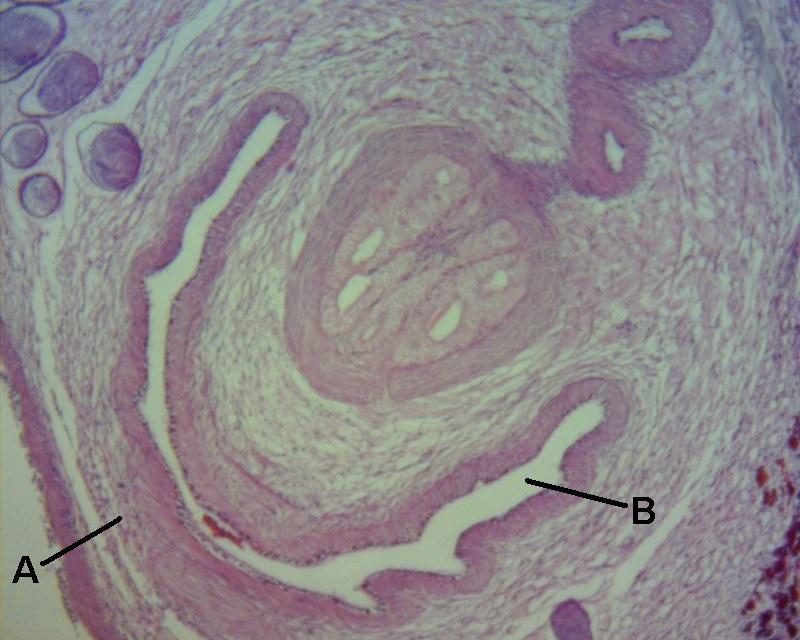Overview
Brief Summary
Comprehensive Description
Distribution
Physical Description
Size
Identification Resources
Ecology
Local Distribution and Habitats
Biogeographical Distribution
Micro-habitats and Associations
Crypsis
Life History & Behaviour
Behaviour
Cyclicity
Evolution & Systematics
Fossil History
Systematics or Phylogenetics
Morphology and Physiology
External Morphology
Internal Anatomy
Cell Biology
Molecular Biology & Genetics
Nucleotide Sequences
Molecular Biology
Conservation
Trends
Threats
Wikipedia
References & More Information
Content Partners
Bibliographies
Biodiversity Heritage Library
Search the Web
Biomedical Terms
Names & Taxonomy
Related Names
Synonyms
Common Names
Page Statistics
Content Summary |  Internal Anatomy Internal Anatomy
A large area of the worms body is taken up by the pharynx. This sits within a pharyngeal cavity, and the worm is able to evert this to feed on prey7. This pharynx is highly muscularised (figure 1). The mouth is located on the ventral surface. The lumen of the pharynx is lined with cilia (figure 3g) which enable food to be passed towards the digestive tract. In polyclads the gut is highly branched, providing a large surface area for digestion, and in some larger species this system include small muscular valves to assist with the movement of food particles6.
Figure 1: Longitudinal cross section of the centre of the flatworm showing the muscular pharynx sitting within a pharyngeal cavity (A) and the pharyngeal lumen (B). The ventral surface is towards the left hand side of the image.
|
Away from the central region the body is extremely thin. Once again it is highly muscularised, for example a thick layer of circular muscle encircles the body beneath the basal lamina (figure 2e). Between the body wall and the gut compartment there is a thick layer of connective tissue known as parenchyma (figure 2d). Between the outer epidermis and the basal lamina numerous rhabdoids may be seen, appearing as elongated pink rods when stained (figure 2f). Rhabdoids are excreted by gland cells onto the body surface where they expand to form a mucus layer7. In this species these rhabdoids are concentrated on the dorsal surface. This may be another defense against desiccation as a mucus layer may help to reduce water loss.
Figure 2: Longitudinal cross section away from the central pharyngeal region towards the outer edge showing: ventral epidermis (C), parenchyma tissue (D), basal lamina of dorsal surface (E), and rhabdites (F).
|
The sensory system of flatworms typically consists of a ring-like brain from which several nerve cords radiate, with these cords then joining nerve nets across the body7. These primitive nerve nets have been described in the related leptoplanid flatworm Notoplana acticola3, and this unidentified species is likely to have a similar system. The polyclad 'eyes' consist of pigment cup ocelli capable of light detection7, and in this species these are concentrated in the head tentacles.
Figure 3: High magnification view of the pharyngeal lumen showing cilia (G).
|
Sex organs are scattered throughout the body, although the testes (figure 4) in particular are concentrated close to the central region of the body. Polyclads are hermaphroditic, and almost all reproduce by sexual reproduction6, therefore ovaries are also present. The ovary is divided into two specialised regions: the germarium, where eggs are produced, and the vitellarium where yolk-filled cells are produced. These two regions may be combined or clearly separated but linked by a duct7 although it is unclear whether they are combined or separated in this species.
Figure 4: High magnification view of sperm within the testes (H).
|
Polyclads, almost certainly including this species, frequently show concentrations of totipotent neoblast cells7. These cells provide the worms with their remarkable ability to regenerate body parts even after significant damage has been sustained.
|
|